 Famed cosmologist Stephen Hawking is scheduled to take a ride on the vomit comet, and experience a bit of what it’s like to fly in zero gravity.
Famed cosmologist Stephen Hawking is scheduled to take a ride on the vomit comet, and experience a bit of what it’s like to fly in zero gravity.
Continue reading “Stephen Hawking Will Experience Zero Gravity”
Construction for the New Soyuz Launch Facility Begins
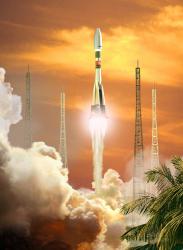 Workers broke ground this week on a new construction site at the European Space Agency’s new Soyuz launch base in French Guiana. Currently, Soyuz rockets only blast off from the Baikonur Cosmodrome in Kazakhstan. But at the end of 2008, the rockets will roar from this facility as well.
Workers broke ground this week on a new construction site at the European Space Agency’s new Soyuz launch base in French Guiana. Currently, Soyuz rockets only blast off from the Baikonur Cosmodrome in Kazakhstan. But at the end of 2008, the rockets will roar from this facility as well.
Continue reading “Construction for the New Soyuz Launch Facility Begins”
Virgin Galactic Considering Hypersonic Airline Travel
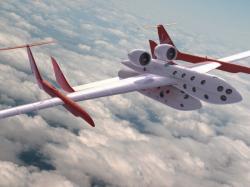 Flightglobal.com is reporting that NASA and Virgin Galactic have signed a memorandum of understanding to work on commercial spaceflight and hypersonic airline travel.
Flightglobal.com is reporting that NASA and Virgin Galactic have signed a memorandum of understanding to work on commercial spaceflight and hypersonic airline travel.
Continue reading “Virgin Galactic Considering Hypersonic Airline Travel”
Blue Origin’s Rocket is Finally Revealed
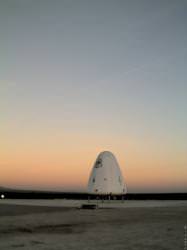 It’s been a huge secret for several years. Amazon.com’s founder Jeff Bezos has a rocket company on the side called Blue Origin. But that’s pretty much all we knew.
It’s been a huge secret for several years. Amazon.com’s founder Jeff Bezos has a rocket company on the side called Blue Origin. But that’s pretty much all we knew.
Continue reading “Blue Origin’s Rocket is Finally Revealed”
Jules Verne Spends 21 Days in Space, Here on Earth
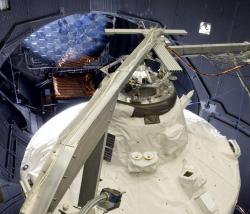 ESA’s new Automated Transfer Vehicle, Jules Verne, has recently spent 21 days in a chamber that simulated the cold, radiation and vacuum of space. And it passed with flying colours. The 20-tonne spacecraft will eventually be attached to the top of an Ariane 5 rocket in the summer of 2007, and flown to the International Space Station. A whole fleet of these spacecraft will eventually be built, transferring replacement cargo to the station, and then serving as disposable garbage cans, burning up in the Earth’s atmosphere.
ESA’s new Automated Transfer Vehicle, Jules Verne, has recently spent 21 days in a chamber that simulated the cold, radiation and vacuum of space. And it passed with flying colours. The 20-tonne spacecraft will eventually be attached to the top of an Ariane 5 rocket in the summer of 2007, and flown to the International Space Station. A whole fleet of these spacecraft will eventually be built, transferring replacement cargo to the station, and then serving as disposable garbage cans, burning up in the Earth’s atmosphere.
Continue reading “Jules Verne Spends 21 Days in Space, Here on Earth”
Podcast: Plasma Thruster Prototype
If you’re going to fly in space, you need some kind of propulsion system. Chemical rockets can accelerate quickly, but they need a lot of heavy fuel. Ion engines are extremely fuel efficient but don’t generate a lot of power, so they accelerate over months and even years. A new thrusting technology called the Helicon Double Layer Thruster could be even more efficient with its fuel. Dr. Christine Charles from the Australian National University in Canberra is the inventor.
Continue reading “Podcast: Plasma Thruster Prototype”
Researchers Create a New Plasma Thruster
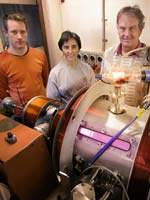
Image credit: ANU
The dream of manned missions to Mars and beyond could become a reality thanks to plasma technology developed at ANU.
Research results to be published in the journal Applied Physics Letters this week show that the ANU Helicon Double Layer Thruster (HDLT) can be powered by hydrogen ? an otherwise unusable waste product in manned spacecraft.
The HDLT uses solar electricity from the sun to create a magnetic field through which hydrogen is passed to make a beam of plasma, which powers a ship through space.
While the plasma thruster has a fraction of the power of the rockets that launch the space shuttle, it uses far less fuel and gets more thrust as a ratio of the fuel it burns, making it ideal for interplanetary missions.
“The Americans say they want to send men to Mars ? this is the technology to take them there,” said the HDLT’s inventor Dr Christine Charles.
“This thruster gives Australia a fantastic opportunity to be part of the international space race.”
The ANU team led by Professor Rod Boswell has been in close collaboration with NASA, helping US scientists fix glitches with their own plasma thruster, the Variable Specific Impulse Magnetoplasma Rocket (VASIMR) invented by veteran shuttle astronaut Franklin Chang-Diaz, who visited ANU last year.
While the technology of plasma thrusters is not new, its popularity has only taken off in recent years, with it being used to help satellites maintain their positions in orbit. However, the NASA VASIMR concept and more recently the ANU HDLT are very recent inventions which may open the door to deep space exploration.
The ANU thruster has the edge on rival technologies as it is simpler and has been proven to work with hydrogen. Importantly, it also does not emit positively charged ions that could potentially cause a disaster by interfering with a spacecraft’s communications systems.
“The HDLT is a beautiful piece of physics because it is so simple. It doesn’t need any moving parts,” Dr Charles added.
Original Source: ANU News Release
